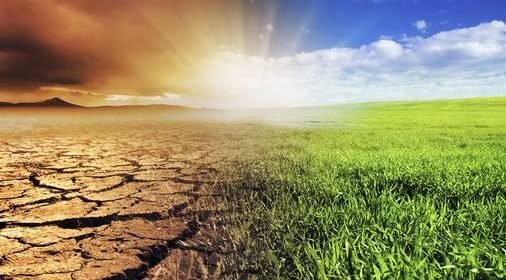Earth becoming an increasingly unhealthy place for people – UN report

Earth is sick, with multiple and worsening environmental problems killing millions of people every year, according to a United Nations report.
The scientific report says climate change, a global major extinction of animals and plants, a human population soaring towards 10 billion, degraded land, polluted air, and plastics, pesticides and hormone-changing chemicals in the water are making the planet an increasingly unhealthy place for people.
But the report’s authors said it may not be too late.
“There is every reason to be hopeful,” said co-editors Joyeeta Gupta and Paul Ekins. “There is still time but the window is closing fast.”
The sixth Global Environment Outlook, released at a UN conference in Nairobi, Kenya, painted a dire picture of a planet where environmental problems interact with each other to make things even more dangerous for people.
It uses the word “risk” 561 times in a 740-page report.
The report concluded that “unsustainable human activities globally have degraded the Earth’s ecosystems, endangering the ecological foundations of society”.
But the same document said changes in the way the world eats, buys things, gets its energy and handles its waste could help fix the problems.
The report is “a dramatic warning and a high-level road map for what must be done to prevent widespread disruption and even irreversible destruction of planetary life-support systems”, said University of Michigan environment dean Jonathan Overpeck, who was not part of the report.
Several other scientists also praised the report, which draws on existing science, data and maps.
“This report clearly shows the connections between the environment and human health and well-being,” said Stuart Pimm, a Duke University ecologist.
Environmental scientists have said air pollution annually kills seven million people worldwide. Water pollution, with associated diseases, kills another 1.4 million.
The scientists said the most important and pressing problems facing humankind are global warming and loss of biodiversity because they are permanent and affect so many people in many different ways.
“The report provides a road map to move beyond ‘doom and gloom’ and rally together to face the challenges and take the future in our hands,” said former US National Oceanic and Atmospheric Administration chief Jane Lubchenco, who was not part of the report. “This is an all-hands-on-deck moment.”
Here are some of the report’s conclusions:
– Climate change
“Time is running out to prevent the irreversible and dangerous impacts of climate change,” the report said, noting that unless something changes, global temperatures will exceed the threshold of warming that international agreements call dangerous.
The report detailed climate change impacts on human health, air, water, land and biodiversity. Almost all coastal cities and small island nations are increasingly vulnerable to flooding from rising seas and extreme weather, it said.
– Biodiversity
“A major species extinction event, compromising planetary integrity and Earth’s capacity to meet human needs, is unfolding,” the report said. It listed threats to ecosystems, fisheries and other major systems. It notes conservationists are divided on whether Earth is in a sixth mass extinction.
– Air pollution
Not only are millions of people dying each year, but unhealthy air especially hurts “the elderly, very young, ill and poor”, the report said.
– Water pollution
While 1.5 billion people now get clean drinking water they lacked in 2000, water quality in many regions has worsened, the report said.
Plastics and other litter have invaded every ocean at all depths, the report added.
– Antibiotic resistance
People getting sick from diseases caused by antimicrobial resistant bacteria in water supplies could become a major cause of death worldwide by 2050, unless something can be done about it, the report said.
– Land degradation
The report said land is getting less fertile and useful. It said degradation hot spots, where it is difficult to grow crops, now cover 29% of all land areas. The rate of deforestation has slowed but continues, it added.
Source: Read Full Article